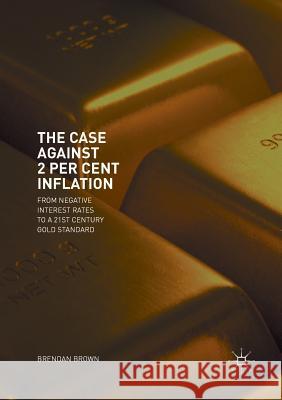The Case Against 2 Per Cent Inflation: From Negative Interest Rates to a 21st Century Gold Standard » książka
topmenu
The Case Against 2 Per Cent Inflation: From Negative Interest Rates to a 21st Century Gold Standard
ISBN-13: 9783030077495 / Angielski / Miękka / 2018 / 232 str.
Kategorie:
Kategorie BISAC:
Wydawca:
Palgrave MacMillan
Język:
Angielski
ISBN-13:
9783030077495
Rok wydania:
2018
Dostępne języki:
Ilość stron:
232
Waga:
0.29 kg
Wymiary:
21.01 x 14.81 x 1.3
Oprawa:
Miękka
Dodatkowe informacje:
Wydanie ilustrowane











